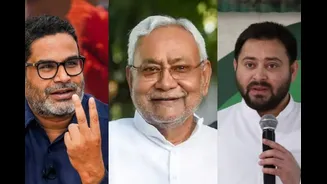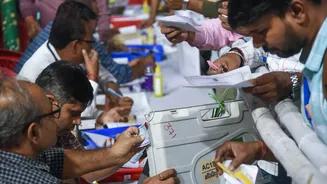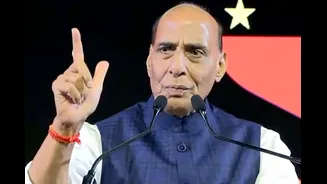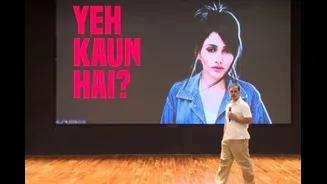We are in the middle of one of India’s most intense state elections — Bihar 2025. The first phase of voting saw a record 65% turnout, the highest in the state’s history. The final phase takes place on Tuesday,
with results due on November 14. Many outside the state wonder: Why does an election in Bihar dominate the national conversation? Because Bihar is the laboratory of India’s most complex caste politics. Its voters are politically alert, outspoken, and unpredictable. The alphabet soup of political parties — JDU, RJD, BJP, LJP, HAM, VIP, Left, AIMIM, JSP, RLM, JAP — makes every election a masterclass in coalition building. And in Bihar, it’s never a single-party win. The winner is always the right alliance — one that gets its caste math right. In Bihar, parties flip sides faster than you can count, yet Nitish Kumar has stayed the Chief Minister for most of the last 20 years.
Vote Share Tells the Real Story
|
Party
|
Vote Share 2020
|
Vote Share 2015
|
|
BJP
|
19.46%
|
24.42%
|
|
RJD
|
23.11%
|
18.35%
|
|
JDU
|
15.39%
|
16.83%
|
|
Congress
|
9.48%
|
6.66%
|
No party in Bihar crosses 25% of votes — a rarity in Indian politics. And the surprise twist?
2015: The BJP was the largest by votes, but lost to the RJD-JDU alliance.
In 2020: The RJD was the largest by votes, but lost to the BJP-JDU combine.
So the thumb rule is: In Bihar, it’s not the biggest party that wins — it’s the best alliance. The 2025 Bihar elections mean new teams and new math. The alliancesare now cleanly divided:
NDA: BJP, JDU, LJP (Chirag Paswan), HAM, RLM
Mahagathbandhan: RJD, Congress, Left, VIP
Let’s look at their past performance in strike rate — the seats won versus contested:
| Party | Seats Contested (2020) | Seats Won | Strike Rate |
| BJP | 110 | 74 | 67% |
| RJD | 144 | 75 | 52% |
| JDU | 115 | 43 | 37% |
| Congress | 70 | 19 | 27% |
Despite the BJP’s stellar strike rate, Nitish Kumar became the CM. Analysts say Chirag Paswan’s rebel run in 2020 dented the JDU’s tally, while the Congress pulled the RJD down on the other side.
Seat-Sharing 2025: Key Changes
| Party | Seats 2025 | Change vs 2020 |
| BJP | 101 | -9 |
| RJD | 143 | -1 |
| JDU | 101 | -14 |
| Congress | 61 | -9 |
For the first time ever, the BJP and JDU are contesting equal seats (101 each) — a symbolic shift. The LJP (Ram Vilas Paswan faction) has secured 29 seats after its 5/5 sweep in the 2024 Lok Sabha polls.
Nitish’s performance is the most critical variable in the NDA’s equation. The BJP has declared him the CM face once again.
On the MGB side, the RJD remains dominant, while the Congress has been forced to contest fewer seatsdue to its 2020 debacle. Tejashwi Yadav is the undisputed CM candidate, while Mukesh Sahani’s VIP has been promised the Deputy CM slot.
Here are the 5 things working for NDA in Bihar 2025:
- Rs 10,000 Scheme for 1.3 Crore Women – Nitish’s welfare push has outflanked Tejashwi’s promise of ₹2,500 monthly support. Women have already invested in livestock and sewing machines.
- Old-Age Pension Hike – Raised from ₹400 to ₹1,100 for 1.2 crore senior citizens.
- Free 125 Units of Power – Universal domestic electricity sop, widely credited to Nitish.
- Nitish Kumar’s Image – Despite age and fatigue, he’s viewed as dependable and steady.
- PM Modi’s “Jungle Raj” Campaign – The NDA’s key emotional appeal, reminding voters of the RJD era of crime and extortion.
And the 5 Factors Fueling Mahagathbandhan’s Campaign:
- Tejashwi Yadav’s Youth Connect – A fresh face appealing to first-time voters.
- Promise of a Job in Every Family – Ambitious, yet resonant in a state battling unemployment.
- ₹30,000 Cash Pledge for Women – A counter-punch to Nitish’s women scheme.
- Anti-Incumbency Against Nitish Kumar – Two decades in power is weighing down the NDA.
- Clear Projection of Tejashwi as CM Face – A decisive move that gives MGB coherence and direction.
But who has the edge? The NDA banks on women, welfare, and Modi’s campaignenergy. The Mahagathbandhan rides on youth anger, unemployment, and the hunger for change.
Whichever side wins, Bihar will once again prove why it’s called India’s political mirror — complex, unpredictable, and deeply rooted in social arithmetic.















